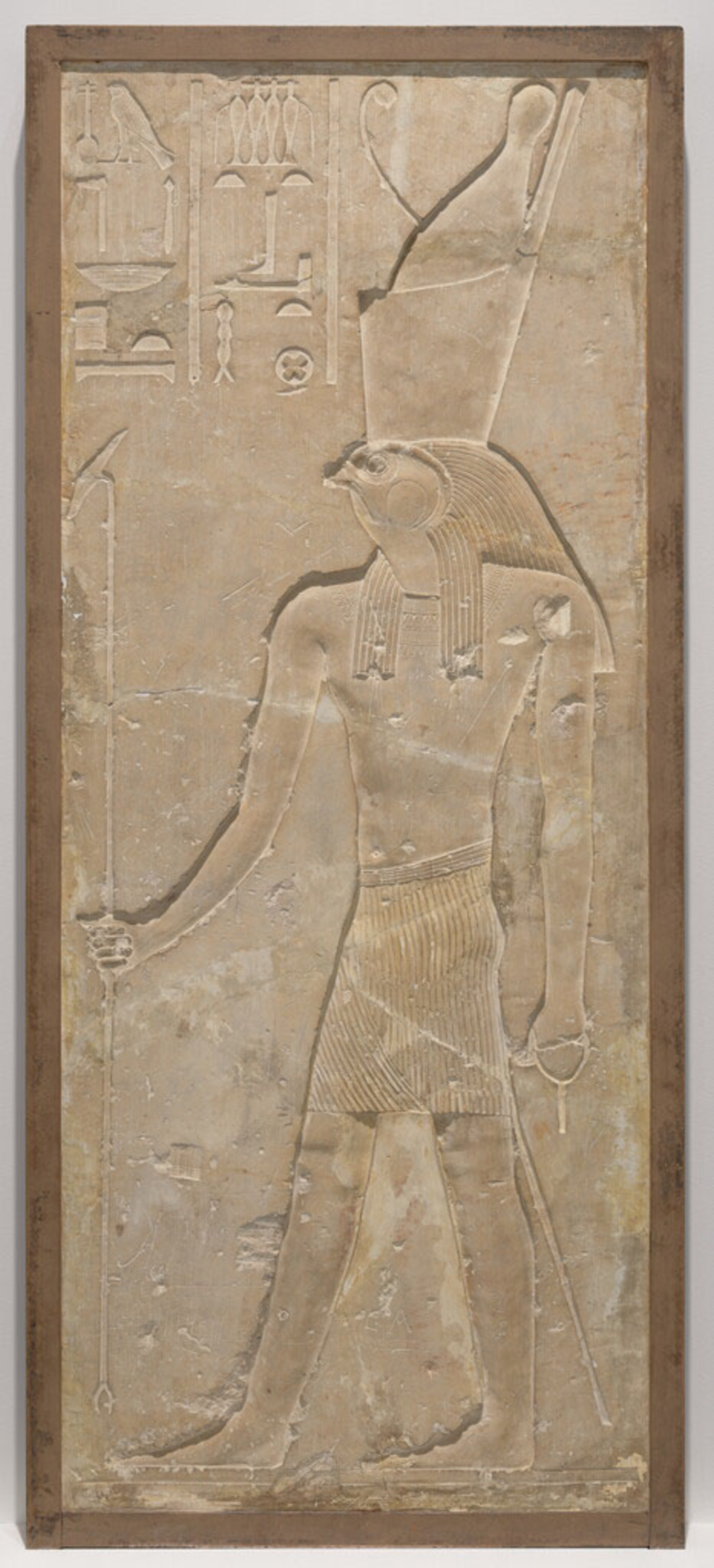A falcon-headed man depicted here in sunken relief represents the Egyptian god Horus. Hybrid animal-human figures were typical representations of the gods in ancient Egyptian art. In the New Kingdom (1550–1069 BCE), the pharaoh was considered the living embodiment of Horus, who was a sky god associated with kingship and worshipped throughout ancient Egypt. He could be represented as a man, a hybrid falcon-man, or simply a falcon.
In this relief, he wears a kilt, long wig, and the double crown of Upper and Lower Egypt. Incised lines indicate the design of a beaded collar, called a pectoral, worn against the chest. His body appears in typical Egyptian composite-view where the torso is viewed frontally, but the rest of the body is seen in profile. Striding forward, the figure holds a was-scepter (a symbol of power) in one hand, which includes a stylized animal head and a forked foot. An unfinished ankh, a symbol of life, appears in his other hand. Together, the crown, scepter, and ankh emphasize his divine authority over all of Egypt.
The inscription appearing next to the crown emphasizes the identity of the figure: “The Perfect Horus, Lord of Heaven, Foremost One of Bahet [Hermopolis Parva].” Bahet most likely refers to the capital of the 15th Nome, or administrative district, in the Nile Delta later known as Hermopolis Parva. In the modern era, the site has been identified by scholars since the 19th century CE. “Amie,” “LA,” “OS,” and “ML” are just some of the graffiti added to the stone over the years. Perhaps the most interesting is one that, although the name is now partially illegible, is accompanied by a year: “1865.” These marks document the biography of this relief and were most likely left by tourists to the original site of the relief prior to its journey to the United States by 1927.

